Search Results
Fine Jewelry University Articles matching: “chemical equation”
Showing only FJU Article results. Click here to show all results.
Fine Jewelry University (Show All FJU Articles)
-
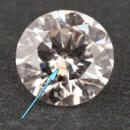
What Are Lab Grown Diamonds?
… technical term. When speaking technically, synthetic gems are man-made crystals with the same crystal structure and chemical composition as the specific gem that is being created. Therefore, a “synthetic diamond” has the same crystal … like nature does under extremely high pressure and temperature. The newest way to grow synthetic diamonds is the Chemical Vapor Deposition (CVD) technique. In the CVD process, a chamber is filled with a carbon rich vapor. Carbon atoms are …
-
Synthetic Gems: The Whole Story
… what nature can produce. Man made gems come in many forms. Every thing from simple glass to plastic to high tech chemical tongue twister like gadolinium gallium garnet (also called GGG) and the modern diamond simulant Moissanite, a man made … are easy for a well trained and equipped gemologist to detect. But if you had gem material that is the same chemically, optically and crystal structure as a natural gem, it would be very hard to tell them apart. In gemology we call this a …
-
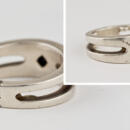
Jewelry Solder: What You Should Know
… that it is so resistant to tarnishing or discoloring over time. Tarnishing, also called oxidization, is a result of chemical reactions between the metal and elements in the air and liquids that it comes in contact with. The result of this …. Unlike pure gold, base metals are not nearly as resistant to tarnishing. These metals can easily have those chemical reactions with the elements around them causing them to discolor. By adding additional base metals to solder alloys the …
-
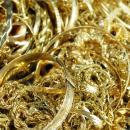
Gold Purity and The Differences Between White and Yellow Gold
Gold, just the word brings to mind value, rarity, wealth, beauty and jewelry. But what is gold? Yes the scientists tell us gold is an element with the chemical symbol Au. We know it is the heraldic metal and it is a rare yellow mineral that is the most malleable and pliable of all metals. Yes, but what does that mean to me? Gold is a beautiful metal that is used to make timeless jewelry. …
-
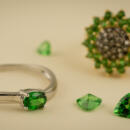
Gem in the Spotlight: Tsavorite Garnet
… green color reminds one of the other green garnet called Demantoid. Demantoid, however, is a completely different variety of garnet found primarily in Russia. Tsavorite is 7.5 on the Mohs scale. It is a green grossular garnet with a chemical make-up of CA 3 Al 2 (SiO 4 ) 3 . It has a Refractive Index (RI) of 1.740 and a dispersion index of 0.028. So how did Tsavorite come to be called Tsavorite? Its technical description as a green grossularite doesn’t exactly roll off the…
-

How Are Lab Grown Diamonds Made?
…cubic press. Weighing in at 10.02 carats, this incredible diamond is graded as E color and VS1 clarity. CVD Diamonds Chemical Vapor Deposition (CVD) is a more recently developed technique by which diamonds can be grown from a hydrocarbon gas ….23 carats; it was graded as I color and VS2 clarity. Intense research is ongoing around the world into the field of Chemical Vapor Deposition, and every day the technology is improving. Only time will tell if and when CVD diamonds will reach…
-
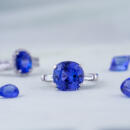
Gem in the Spotlight: Tanzanite
…a gemstone has. If there is a strong green component at any angle, then it likely has not been heated. The main factors that influence the value of tanzanite are its hue and how deep the color is. Less important, but still part of the equation, are the cut and clarity. As with all colored gems, the value of tanzanite comes from its color. Tanzanite has a Moh’s hardness of 6-7, making it about the same hardness as quartz, softer than ruby, sapphire and emerald and hard than …
-

How to Tell If a Diamond Is Natural or Lab Grown
… diamonds, but we still want to be able to tell them apart. When it comes to diamond simulants like Cubic Zirconia (CZ) or Moissanite, it is easy to identify them because they aren’t diamonds. But, with lab grown diamonds, the chemical structure and properties are all the same as natural diamond, so it becomes much more difficult to differentiate them. Responsible Disclosure The first thing to realize is that most lab grown diamonds are clearly and responsibly disclosed to …
-
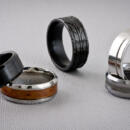
Alternative Metals for Men’s Jewelry
… strength and workability. Our rings at Arden Jewelers are made from aircraft grade 5 titanium. Titanium is a chemical element with the symbol Ti and atomic number 22. It is resistant to corrosion in sea water and chlorine. Titanium is named …issue. Tungsten comes from a Swedish term meaning “heavy stone.” It is element 74 on the periodic table with the chemical symbol “W”. The “W” comes from its earlier name, wolfram. Tungsten has a high melting point at an astounding 6,191 …